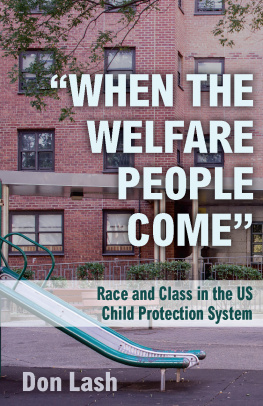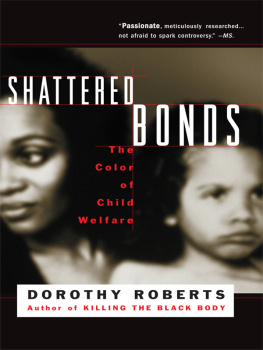CHILD WELFARE FOR THE TWENTY-FIRST CENTURY
CHILD WELFARE FOR THE TWENTY-FIRST CENTURY
A Handbook of Practices, Policies, and Programs
SECOND EDITION
Edited by
GERALD P. MALLON
AND PEG MCCARTT HESS
COLUMBIA UNIVERSITY PRESS
New York
Columbia University Press
Publishers Since 1893
New York Chichester, West Sussex
cup.columbia.edu
Copyright 2014 Columbia University Press
All rights reserved
E-ISBN 978-0-231-52535-0
Library of Congress Cataloging-in-Publication Data
Child welfare for the twenty-first century: a handbook of practices, policies, and programs / Gerald P. Mallon and Peg McCartt Hess, editors. 2d ed.
pages cm
Includes bibliographical references and index.
ISBN 978-0-231-15180-1 (cloth: alk. paper) ISBN 978-0-231-52535-0 (e-book)
1. Child welfareUnited States. I. Mallon, Gerald P. II. Hess, Peg McCartt.
HV741.C516 2014
362.70973dc23
2013027817
A Columbia University Press E-book.
CUP would be pleased to hear about your reading experience with this e-book at .
Cover design: Shaina Andrews
References to websites (URLs) were accurate at the time of writing. Neither the author nor Columbia University Press is responsible for URLs that may have expired or changed since the manuscript was prepared.

CONTENTS
GERALD P. MALLON AND PEG MCCARTT HESS
BRENDA G. MCGOWAN
SUSAN P. KEMP, TRACEY K. BURKE, KARA ALLEN-ECKARD, MELISSA F. BECKER, AND AMY ACKROYD
NICOLE BOSSARD, ANGELA BRAXTON, AND DEBRA CONWAY
HILDA RIVERA-RODRGUEZ
JAN MCCARTHY AND MARIA WOOLVERTON
MARTHA MORRISON DORE
KRISTIN KELLY, KATHLEEN MCNAUGHT, AND JANET STOTLAND
DIANE ELZE
KAREN M. STALLER
NEIL B. GUTERMAN, KRISTIN L. BERG, AND CATHERINE A. TAYLOR
DIANE DEPANFILIS AND THERESA COSTELLO
ARON SHLONSKY AND EILEEN GAMBRILL
MARIANNE BERRY AND SARA MCLEAN
KATHLEEN COULBORN FALLER
JOSEPH P. RYAN AND HUI HUANG
JUDY L. POSTMUS
BARBARA A. PINE, ROBIN SPATH, AND STEPHANIE GOSTELI
MARK F. TESTA AND JENNIFER MILLER
TERRY L. CROSS
REBECCA L. HEGAR AND MARIA SCANNAPIECO
GERALD P. MALLON
LESLIE DOTY HOLLINGSWORTH
TRUDY FESTINGER
JENNIFER RENNE AND GERALD P. MALLON
MARY ELIZABETH COLLINS
MADELYN FREUNDLICH
LLOYD BULLARD, KATHERINE GAUGHAN, AND LARRY W. OWENS
REBECCA L. HEGAR
PEG MCCARTT HESS
MADELYN FREUNDLICH AND LOIS WRIGHT
LINDA MITCHELL, MIRANDA LYNCH THOMAS, AND BONITA PARKER
AMY C. DANDRADE AND SIGRID JAMES
EILEEN MAYERS PASZTOR AND MYRNA L. MCNITT
MARVIN VENTRELL
SARA MUNSON, MARY MCCARTHY, AND NANCY DICKINSON
CATHRYN C. POTTER, MICHELE HANNA, AND CHARMAINE BRITTAIN
CRYSTAL COLLINS-CAMARGO
RUTH G. MCROY
TANYA M. COAKLEY
ILZE EARNER, ROWENA FONG, AND CAROL SMOLENSKI
Almost three decades ago, Joan Laird and Ann Hartman reminded us that every society at every time must make some provision for its children in need (1985:xvixvii). When Laird and Hartman, the editors of what many child welfare professionals believe to be a seminal text on child welfare, A Handbook of Child Welfare: Context, Knowledge and Practice, wrote this, the field of child welfare was determinedly implementing a new federal mandate that outlined such provisions. The Adoption Assistance and Child Welfare Act of 1980 (P.L. 96-272) identified a range of management and practice requirements intended to prevent the unnecessary placement of children and to reunify families when placement could not be prevented. Laird and Hartmans Handbook of Child Welfare outlined the philosophical underpinnings as well as the policy and practice emphases of that period; it provided detailed discussions that shaped the understanding and commitments of numerous cohorts of students who subsequently entered practice in the field. As coeditors of this volume, it is important for us to acknowledge the influence Laird and Hartmans text has had in our teaching, in our professional child welfare practice, and in our development of the first, and now second, edition of this text. Our work has been inspired by, yet differed from, that seminal work.
Since 1985, when Laird and Hartman collected the essays in their volume, child welfare as an institution and a field of practice has continued to experience transformation in the provisions for its children, youth, and families in need. Despite the hope associated with the passage of the Adoption Assistance and Child Welfare Act, the field has struggled during the intervening years with insufficient funding, increased public concerns about the safety of children, instability in the public child welfare workforce, and generally disappointing outcomes with regard to achieving permanency for children and youth who entered care. Throughout the country, stresses within and upon the child welfare system have kept many state agencies on the defensive and in the news. As reflected throughout this second edition, many changes continue to occur in practice and in ideological and planning orientations. Change has perhaps most vividly been seen in the primary legislation that forms the current foundation of child welfare policy in the U.S.: the Adoption and Safe Families Act of 1997 (ASFA; P.L. 105-89) and, more recently (2008), in the opportunities for further reform provided by the passage of Fostering Connection to Success and Increasing Adoptions Act (P.L. 110-351). Safety, permanency, and well-being of children, youth, and their families form the foundation for the ASFA legislation that replaced the Adoption Assistance and Child Welfare Act of 1980 (Title IV-E of the Social Security Act, P.L. 96-272). These principles have been affirmed and further bolstered by Fostering Connections. Both ASFA and Fostering Connections put into place legislative provisions to ensure that child safety is the paramount concern in all child welfare decision making, shorten the time frames for making permanency planning decisions, and promote the adoption of children and youth who cannot safely return to their own homes. These legislative acts also require a focus on positive results for children, youth, and families and promote the strengthening of partnerships between child welfare agencies and other service delivery systems to support families at the community level.
During the first decade of the twenty-first century, numerous changes have taken place in national child welfare outcomes and contextual factors. Some of these are hopeful, such as the decreased numbers of children in out-of-home placements between FYs 2o02 and 2011, 523,000 to 401,000, a change of 23.3 percent (Childrens Bureau 2013a:2), and a decline in numbers of children in foster care for all major non-Hispanic race groups (Administration on Children, Youth, and Families 2013:1). Other changes are discouraging, such as CFSR findings that many states that reunified children with their families in a more timely manner between 2008 and 2011 also had a high percentage of children who reentered foster care within 12 months of the reunification (Childrens Bureau 2013a: 4, 6). Although during this same period (20082011) 24 percent of states improved in performance regarding reunification of children with their families within 12 months of the childs placement, 29 percent of states declined in performance regarding childrens reentry into care within 12 months of reunification (2013b:36). Summaries of recent national child welfare demographics and outcomes can be found at the cited websites.






 CONTENTS
CONTENTS